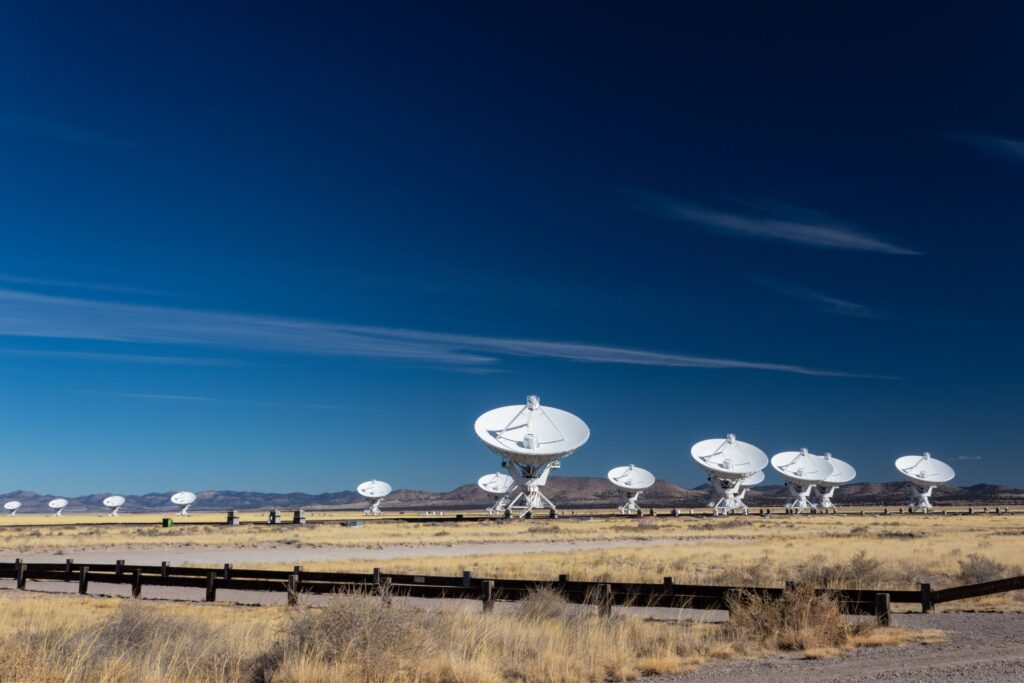CONSUNET IS ON A MISSION TO TRANSFORM THE ‘INVISIBLE ENABLER OF MODERN WIRELESS TECHNOLOGIES’
It’s not something we consider when we pick up our smart phone or turn on the car radio, but our modern lifestyles would not be possible without the Electromagnetic Spectrum (spectrum). Our industries, healthcare services, safety and security all depend on this finite, invisible resource.
Since the advent of radio communication, access and usage of the spectrum has been carefully managed, using a complex system that hasn’t changed in over 100 years. National licensing bodies (in Australia, the Australian Communications and Media Authority) allocate slices of spectrum that each licensee controls. Telecommunications companies spend billions of dollars on spectrum licences in Australia alone.
Spectrum is already described as ‘complex, contested and congested’ but ever-increasing demand from high-growth industries, such as space and Internet of Things (IoT), autonomous cars and sensor systems, can only add more complexity.
“Spectrum is the invisible enabler of modern wireless technology, yet the management process has not kept up with modern demands,” says Kuba Kabacinski, Executive Chairman of Consunet, a world-leading provider of cyber and spectrum security solutions.

“This is not just about streamlining outmoded systems, the mere fact that the world relies on spectrum availability makes it open to disruption or attack.”
Consunet’s 100-plus cyber and AI specialists have invested thousands of research hours to create game-changing Spectrum Management innovations. The resulting DUST technologies use Artificial Intelligence and Machine Learning (AI/ML) to deliver highly adaptive spectrum forecasting, planning, and access techniques. DUST addresses inherent inefficiencies and vulnerabilities in today’s outdated Spectrum Management approach.
DUST technology can detect and act on anomalies, for example to neutralise a malicious attempt to disrupt access. Spectrum owners can quickly and securely share previously unused spectrum, minimise spectrum conflict, and coordinate access across large groups of users.
“It’s time to move away from a slow and inefficient bureaucratic process, to a nimble, adaptable one that takes full advantage of 100 years of technology innovation,” Kabacinski says. “Consunet’s objective is to create new, disruptive opportunities for wireless communications and autonomous systems, while protecting existing spectrum asset value.”
Recognised and trusted by the Australian Defence sector for its capabilities in Electromagnetic Warfare and Spectrum Management, Consunet is developing new international markets for DUST.
“Spectrum Management is a universal challenge and Australia has a remarkable history of spectrum technology innovation. We believe DUST can have as much impact as the invention of WiFi by CSIRO. It’s an honour to follow in those footsteps by exporting our Australian innovation, transforming the way we interact in tomorrow’s world.”

Trusted Defence Supplier
Consunet is based in Adelaide, a mid-size Australian city known for its advanced Defence technology capabilities. After two decades of developing sovereign IP and skills in Electromagnetic Warfare technologies, Consunet won the Australian Defence Electromagnetic Battle Management Capability delivery and sustainment project in fiscal year 2022 from an international field. Consunet’s vision is to build the Australian cyber and spectrum security future.

What is DUST?
Consunet developed its Distributed aUtonomous Spectrum managemenT system, known as DUST, as part of a 4-year R&D collaboration with several Australian universities and the Defence Science and Technology Group, supported by funding from the Trusted Autonomous Systems Defence Cooperative Research Centre.

Electromagnetic Spectrum
A range of all types of electromagnetic radiation of varying frequency, spectrum facilitates energy and information transfer and is necessary for technologies such as WiFi, satellite, TV, microwaves, and mobile phones.
DUST is made up of 4 key elements:
Spectrum Simulator simulates Electromagnetic Spectrum for a “city-scale” number of spectrum users, enabling AI/ML development.
Spectrum Weather uses novel mathematical and ML models to predict future spectrum utilisation, taking into account past utilisation and adapting forecasts to changing parameters in time and space.
Spectrum Planning uses advanced AI solutions that exploit forecasting data to outperform existing spectrum planning approaches.
Spectrum Sharing dynamically exchanges spectrum allocation on a per-device and per-network fidelity.














